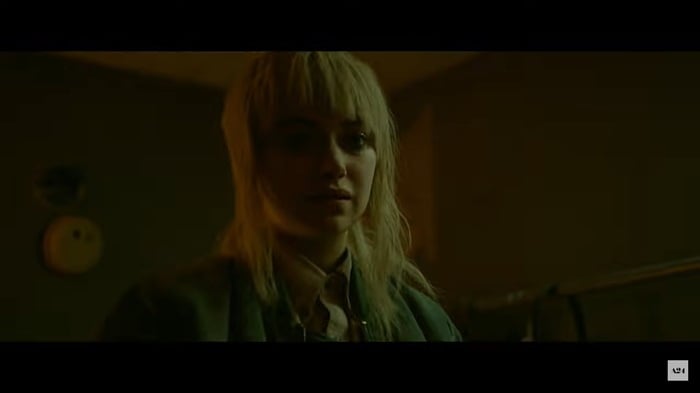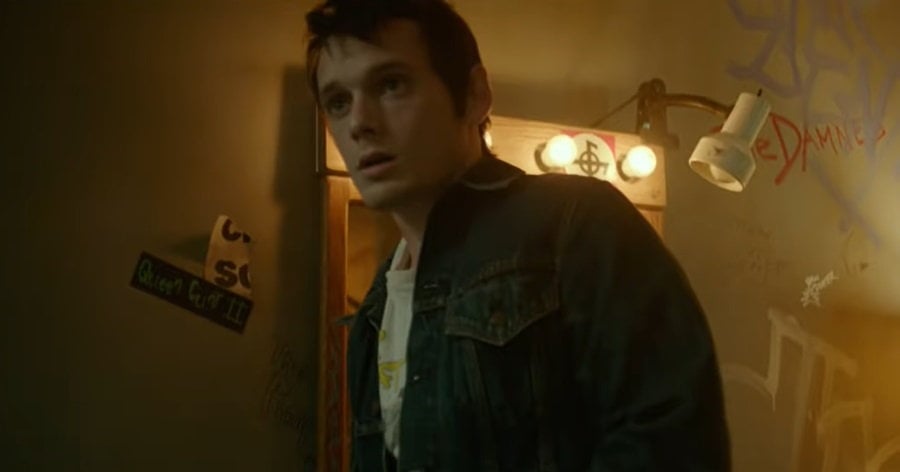Green Room is a 2015 thriller-horror film written and directed by Jeremy Saulnier. The film follows a punk rock band, The Ain't Rights, as they find themselves trapped in a secluded venue, facing off against a group of violent neo-Nazis after witnessing a murder. The movie explores themes of survival, tension, and the brutal consequences of extremism.
Plot Summary
The Ain't Rights, a struggling punk band, is on a tour through the Pacific Northwest. Broke and desperate for gigs, they reluctantly accept an offer to play at a remote neo-Nazi bar in the woods. The opening scenes establish the gritty and tense atmosphere as the band members, including Pat (Anton Yelchin) and Sam (Alia Shawkat), navigate the seedy underbelly of the music scene.
After their performance at the neo-Nazi venue, The Ain't Rights accidentally witness a murder in the green room, the backstage area of the club. The victim is a young woman, and the murderers are members of the neo-Nazi group led by Darcy Banker (Patrick Stewart). Realizing the severity of the situation, the band members barricade themselves in the green room, setting the stage for a claustrophobic and intense battle for survival.
The majority of the film takes place in the confined space of the green room, creating a tense and suspenseful atmosphere. The band members, along with a friend from the venue, Amber (Imogen Poots), must come up with a plan to escape the dangerous situation they find themselves in. The neo-Nazis, led by Stewart's menacing Darcy, are determined to eliminate any witnesses to the crime.
As the band members attempt to negotiate with the neo-Nazis, tensions escalate. The filmmakers use the confined space to amplify the suspense, making every movement, decision, and revelation significant. The sense of impending danger is palpable, and the audience is kept on edge as the characters devise strategies to survive.
The film takes a brutal turn as violent confrontations unfold between The Ain't Rights and the neo-Nazis. The struggle for survival becomes a visceral and bloody battle, highlighting the raw and unflinching nature of the film. Jeremy Saulnier's direction and the cinematography contribute to the intensity, using the confined space to create a sense of urgency and desperation.
One of the notable aspects of Green Room is Patrick Stewart's chilling portrayal of Darcy Banker. Known for his iconic roles in more benign characters, Stewart's performance as the calculating and ruthless neo-Nazi leader is a departure from his usual roles. Darcy's calm and collected demeanour adds an extra layer of menace to the character, making him a formidable antagonist.
As the band members fight for their lives, desperation sets in. The film doesn't shy away from depicting the harsh reality of survival, and characters are forced to make difficult decisions. The claustrophobic setting amplifies the emotional impact of these moments, creating a sense of hopelessness as the characters confront the brutal consequences of their circumstances.
Imogen Poots' character, Amber, adds complexity to the narrative. Initially an outsider, she becomes an unexpected ally to The Ain't Rights. Her perspective provides a different dynamic to the group dynamics, and her survival instincts contribute significantly to the unfolding events. Poots delivers a compelling performance that adds depth to the film's ensemble cast.
The Unpredictable Climax
As the film hurtles towards its climax, the stakes continue to rise. The band members' attempts to escape become more desperate, and the neo-Nazis become increasingly ruthless in their pursuit. The unpredictable nature of the narrative keeps the audience guessing about who will survive and what sacrifices will be made in the process.
The Ending of the Green Room Explained

Though the Green Room starts with a notable ensemble cast, given the confined settings, it quickly becomes apparent that characters are not safe from harm. The film fearlessly eliminates characters, underscoring the genuine danger posed by the antagonist, Darcy. Through failed escape attempts, the cast dwindles, leaving only the lead singer Pat (Anton Yelchin) and an unexpected ally, Amber (Imogen Poots), as the sole survivors with a fighting chance by the end.
In the ending of Green Room, after the death of Sam, the skinheads, led by Darcy, plan to stage a crime scene using the band's members. However, Pat and Amber, left as survivors, rally themselves after a motivating speech from Pat. They turn the tables, ambush the skinheads, and manage to take control, ultimately killing Darcy and his allies. As they wait for the police, Pat finally decides on his desert island band, a symbol of survival and resolution.
Pat's desert island band isn't explicitly mentioned in the movie, but hints suggest it could be Creedence Clearwater Revival (CCR). Darcy's plan was to frame the band's death as an accident caused by their trespassing. He intended to stage a scene with the band siphoning gas and unleash attack dogs to create the illusion. The red laces symbolize different levels of experience and trust within the skinhead world. They represent a person's involvement in violent acts for the skinhead movement, indicating a level of commitment through spilling blood.
Amber and Pat paint their faces as a tactical move inspired by a story Pat tells about a paintball game where breaking the rules led to victory. It symbolizes their rebellion against the skinheads and signifies their unity in fighting on their own terms.
The film's real essence lies not just in its anti-Nazi stance but in the primal instinct to survive. The title, “Green Room”, metaphorically represents a space of challenge and survival. "Punk" in the movie reflects more than just an aesthetic; it's about thinking for oneself and challenging hierarchy. The band's choice of songs and the film's exploration of punk delve into the idea that appearance alone doesn't define punk; it's about authenticity and individuality.






